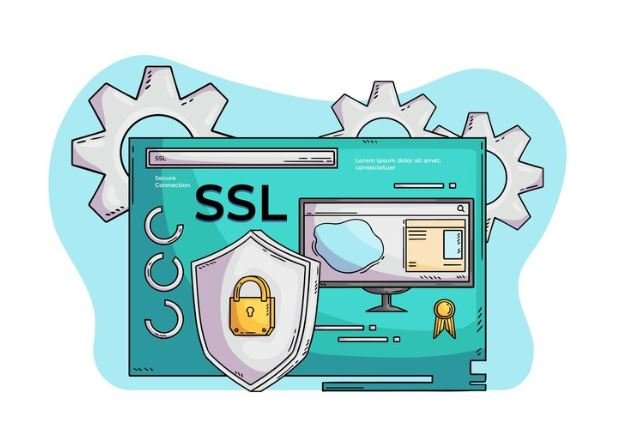Errors can be annoying, particularly when you are working on a project or installing software. A common mistake to make in development is when you see the subprocess-exited-with-error message.
In a programming environment or during the installation of software packages, you are usually dealing with this type of error. This indicates that a subprocess, an individual task executed by a parent, was unsuccessful to finish.
Analyzing the Error Message
The error subprocess-exited-with-error means something to do with a command or a task that was being run in the background had a conflict and couldn’t perform as intended.
A subprocess is a helper in your computer that takes care of specific jobs for a bigger program. Now, this helper can fail if something goes wrong within this helper when it is working.
Common scenarios in which this error can show up are software library installation, script execution, or code compilation. The message may also provide more information about what went wrong, allowing you to find the issue more easily.
Why Does This Error Happen?
There are many reasons why a subprocess-exited-with-error message could happen. The most common causes are listed some of them are:
- Missing Dependencies are other software components that your program relies on to execute. If these are not found or are outdated, the subprocess may not operate correctly.
- Syntax errors: Errors in your code, like missing punctuation or wrong commands, can cause this error.
- Lack of permissions: If the subprocess doesn’t have the required permissions to read or access certain files or directories, it can fail.
- Software version conflicts: Different software packages or libraries may be incompatible with each other, causing errors.
- Corrupted, Damaged, or incomplete files that are used by the subprocess can prevent it from working correctly.
Before we look at the solution, we need to understand the reason for the error to begin with.

How to Fix the Error
To solve subprocess-exited-with-error, a cluttered error message, you need to find the root cause and take the right actions to fix it. There are several common ways to go about it.
Read the Error Message Carefully
When you encounter this error, read the full message. It usually provides some extra information about what happened, like the file that caused the problem or the command that it ran.
The source of the problem can be discovered with the help of keywords or specific details on the screenshot. If the error message says you’re missing a library, for example, you’ll know you can solve the problem by installing that library.
Make Sure You’re Not Missing Dependencies
Dependencies are like tools that your program needs to do its job. Without one of its dependencies, the subprocess can no longer work. It means you need to install or update the necessary software or libraries to get it fixed.
For instance, if you’re in Python and a necessary library isn’t installed, you could use a package manager, like pip to install it. For example, running something like pip install library_name may help fix this.
Update or Reinstall the Software
At times, the error happens because the software or library you’re using is not up-to-date or it’s corrupted. If the problem is related to the relevant components, updating or reinstalling them generally solves the issue.
Ensure you are using the most up-to-date version of the software since updates generally contain bug fixes and enhancements. If you are, say, using a package manager such as npm for JavaScript, simply run npm update to get all your dependencies up to date.
Check Your Code for Errors
If the error involves a script or program you’re executing, check your code for errors. Some common ones include: typos, missing/extra characters, and incorrect commands. Using a code editor with syntax highlight can help you find mistakes more easily.
If you run your code through a debugger or test your code in smaller parts you will see where the issue is.
Ensure Correct Permissions
Subprocesses must be granted permission for file and directory access. In this case, the process can fail if permissions are limited. Make sure the program can access the files or folders in question so check their permissions.
That may be through commands such as chmod on Unix-based systems. chmod 755 filename → provide access to the file.
Resolve Version Conflicts
Common three of the bugs and obsolete software packages needed for the following examples. To solve this, check for the version specifications for your software update, and downgrade accordingly.
Avoiding version conflicts using venv For instance, in Python, you can init a virtual environment with python -m venv env_name and install dependencies in isolation.
Reinstall Corrupted Files
That can often resolve the error if it relates to a corrupted file. Delete the offending files and download a new copy from a reliable source.
For instance, if you are installing a library using pip and an error pops up, then you can perform pip uninstall library_name and then pip install library_name to reinstall.

Test Your Fix
If you do change something to fix the error try running the program again or reinstalling your program or whatever you were using. Repeat running the command or script and see if the error returns. If the issue remains, look back at the error message and attempt an alternate solution.
When to Seek Help
If you’ve gone through all of the steps above and the error is still not resolved, don’t hesitate to ask for help. Troubleshooting technical issues is very common on online forums like Stack Overflow.
If you need assistance, provide information about the error, and what you’ve tried, and paste in relevant code or commands. Having this information makes it easier for the community to help understand the problem and possibly provide a solution.
Preventing Future Errors
There is no way to guarantee that you will not run into that unpleasant subprocess-exited-with-error message ever again but you can take steps to help prevent it happening to you:
- Try to keep all the software and dependencies updated.
- Write tests for your code, because that will help you catch bugs earlier in the development phase by testing your code more often and in smaller parts.
- Use a virtual environment to keep project dependencies in separate containers.
- Read the docs and follow best practices for whatever tools you’re using.
Conclusion
The subprocess-exited-with-error message can be annoying as hell, but most of the time, it can be fixed in the right way. Learning what the error meant, what caused it, and how to most effectively implement a solution for the error can get you through it so you can go back to work.
Errors are normal in the world of programming and learning so don’t feel disheartened. Solving each issue gets you skills and confidence. With patience and persistence, you will be prepared to tackle those challenges and succeed with your projects.


